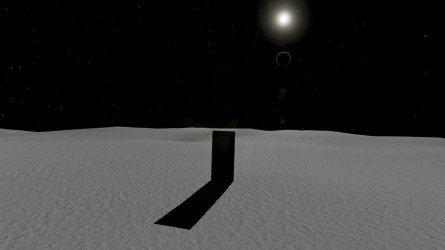shockedcanadian
Diamond Member
- Aug 6, 2012
- 34,574
- 32,115
- 2,905
China continues to explore the universe. Locally at least.
Is that my Christmas gift on the horizon?
https://www.cbc.ca/news/science/rover-moon-cube-1.6277567
A photograph of a cube-like object captured by a Chinese rover on the far side of the moon has fanned speculation over what it could be.
The Yutu-2 caught an image of what seems like a large cubic object on the horizon about 80 metres from its location, said Our Space, a Chinese government science website, citing the rover's last log on Dec. 3.
The solar-powered Yutu, or "Jade Rabbit" in Chinese, will cover the distance of 80 metres in two to three lunar days, according to Our Space, or two to three Earth months. The robotic rover has been operating in the Von Karman Crater in the South Pole-Aitken Basin since its deployment in January 2019.
The mission was a historic first, with no other nation having landed on the far side of the moon until then. With the moon tidally locked to Earth — rotating at the same speed as it orbits our planet — most of its "dark side" is never visible to those on Earth.
Is that my Christmas gift on the horizon?
https://www.cbc.ca/news/science/rover-moon-cube-1.6277567
A photograph of a cube-like object captured by a Chinese rover on the far side of the moon has fanned speculation over what it could be.
The Yutu-2 caught an image of what seems like a large cubic object on the horizon about 80 metres from its location, said Our Space, a Chinese government science website, citing the rover's last log on Dec. 3.
The solar-powered Yutu, or "Jade Rabbit" in Chinese, will cover the distance of 80 metres in two to three lunar days, according to Our Space, or two to three Earth months. The robotic rover has been operating in the Von Karman Crater in the South Pole-Aitken Basin since its deployment in January 2019.
The mission was a historic first, with no other nation having landed on the far side of the moon until then. With the moon tidally locked to Earth — rotating at the same speed as it orbits our planet — most of its "dark side" is never visible to those on Earth.
